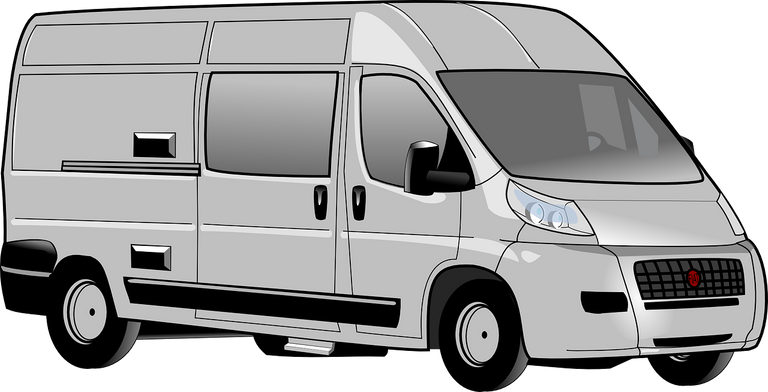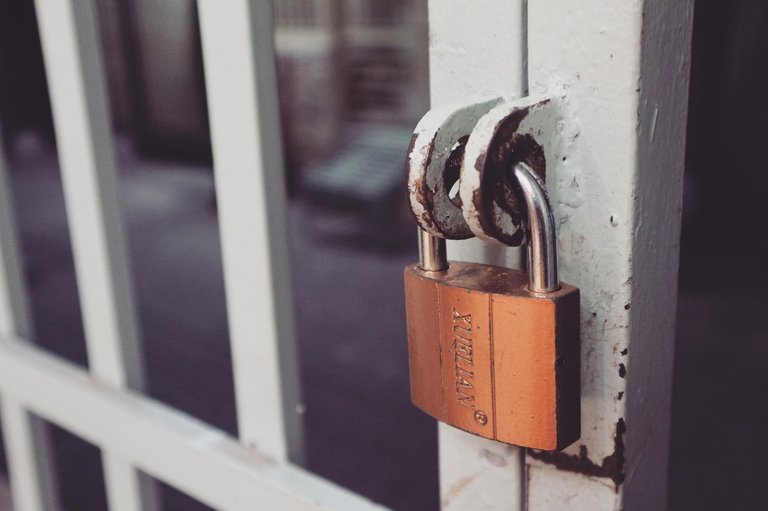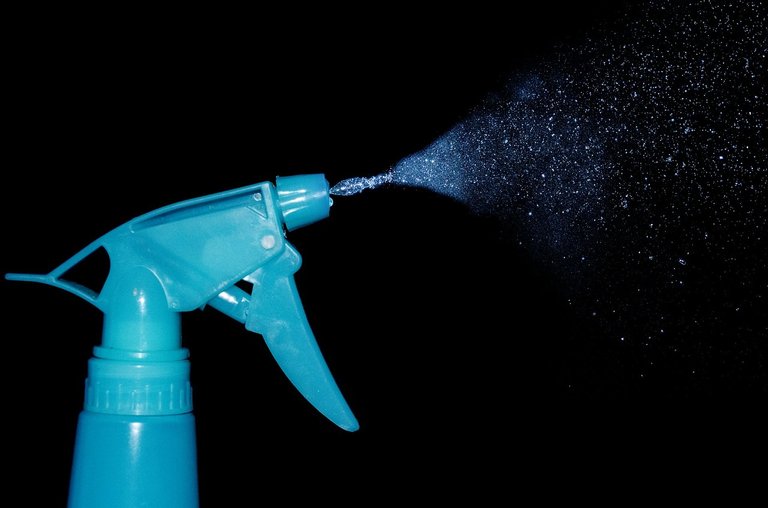A Day In The Life Of Whatever The Heck I Am
It will be six months next week since I went back to work. While I know I have a lot more to learn, particularly in the area of seeing a problem, diagnosing it and then fixing it, the stuff I do regularly is starting to sink in.
And while none of what I do, in and of itself, is rocket science, there are a lot of what I like to refer to as moving parts, that require attention to detail, and some kind of routine, so that the work gets done properly.
I thought I might share, without getting too specific, what a typical week looks like, and walk through all that goes into a typical collection day.

Loading And Filling Days
There is quite a bit of preparation that goes into a collection day, so much so, I end up going down to the shop one day during the week before to get ready for the upcoming week.
So, when I'm loading up, I need to anticipate what I'm going to need in product (which can end up being the time consuming part of the work, even though I'm principally collecting money), and collection bags and tags. Fortunately, we use an app that gives me my itinerary each week, and I'm now to the point where I know more or less how many machines are where, and what might need filling.
The process of unloading (I generally have collected money from the day before, plus ATM bags, empty product bags, and so forth) and then reloading takes about an hour to an hour and a half, depending on what I need, and what questions I might have or instructions I might be given.
Once loaded, I generally have ATMs to add cash to, but I won't actually do collections again until the following week. I will also have a route of between 8-10 places to check on to see if they need product or some kind of repair. Wiping down machines can also take place during this time.
Collection Days
Right now, I have a total of five collection days within a two-week period, which means I have five different routes within my area where I will go to collect. I cover a lot of ground, particularly when I go to the coast and the nearest business with our machines is over an hour one way.
Here's more or less a breakdown of what goes on in a collection day:
Inventory
I start from my own home rather than the shop and offices where the majority of the other employees are based, so my detached office has become a mini-warehouse of sorts. I don't have everything I could possibly need here, but I do have what I use most, which is the prizes people can win when they play the games.
Before I leave in the morning, I need to know which route I'm going out on, which machines need what, and then load the van with those items I brought from the shop. It's best to have more than I need, just in case, but I've found it's better to not have an overloaded van so I can keep track of what I do have.
Maps And Mirrors
I use the maps app on my iPhone a lot. First just to get to places, but now it's more to tell me when I will get there, and whether I can save time making in route adjustments. I get paid while I'm driving too, which is nice, but I know they would rather I be collecting than driving, so I do try to take the shortest routes and get there as quickly as traffic and the law will allow.
The van I drive does not have a rear window, or for that matter, side windows. I have a set of sideview mirrors, with inset mirrors to see the next lane over, if there is one. I also have a camera for backing up (though it is glitchy and is often fogged up, or overexposed to light at night).
That's it. So when I'm trying to get to where I need to go, I depend quite a bit on those mirrors for lane changes, parking, etc.

Timing
Unfortunately, not all places open early. Most of them aren't accessible until 11 AM, with a few opening after that. I can have places where I can get in, say, at 8 AM, but another that doesn't open until 2 PM or later. Obviously, my employer doesn't want me sitting around waiting to get into a place, nor do they want me driving back and forth wasting gas and putting unnecessary miles on the van. There are times where that can't be avoided, but I try to line things up more or less in a loop. It works well on a couple of routes, not so much on others.
It's always best to get to a place before their customers arrive. Why? Because while they may be there to eat, shop, drink, or whatever it may be, they will also play the games. We want them to do that, but it's impossible in most cases to collect a machine while it's being played. That's because the space I need to occupy to collect money is the same space the customer needs to be in to play the game.
Games aren't always set up in rows, but they do have a flow to them, generally, which makes it easier to keep track of what machine has been collected, and which ones are still needing it. I don't have a lot of places where there's more than a half dozen machines, so it's not been too much of issue, but every once in a while, I'm skipping machines to allow game play to continue then trying to get into the ones I skipped before someone else uses them.
Well, as you've no doubt deduced, I can't be early everywhere, so hitting dead spots during the mid afternoon, say between 2-4 pm, works, too, because most folks aren't eating during that time. With kids in school, the majority aren't out and about wanting to play games between 8 AM and 3:30 PM, when I try to get the bulk of my collecting done, if at all possible.
Cutting Down On Distractions
This timing helps me to concentrate on what I'm doing. If I can have the area to myself, that's best. Then, I'm not trying to track what others are doing around me, while I'm focusing on securing bills, coins and machines.
Inevitably, especially when children are around but adults, too, there will be some kind of question or request, or problem with a machine. When I'm collecting, it's best to do that first, and then work on other things, rather than trying to do it all at once. I like to collect all the machines first, then do fills, and then do repairs if necessary. That way, I keep it all straight, and I'm not wandering around with collection bags while I'm trying to fill displays with toys, or flick jammed coins from a coin mechanism.
Actual Collecting
For the most part, there are two different locked doors I need to get into for each machine. Some only have one, but most have at least two. I say at least two because while there's only two doors, there could be padlocks I need to get through, too. It's kind of like Houdini, without all the danger.
The idea is to get in and out of machines as quickly as possible, while making sure all the money is accounted for, and then all the locks secured before I move on to the next.
Most of the machines, in addition to accepting coins, also take bills, so for the most part, I'm opening a door for coins and one for bills, and looking at the coin and prize counters to enter in the same app that gives me my route assignments. It calculates what's supposed to be there in money and gives me an idea of how many prizes have been won.
I like to check to see if there are any coin jams while I have that door open even though I'm not likely to fix it immediately. Most of the time, the employees at the business will know there's an issue, but plenty of times they don't. So me being proactive saves time and work down the road.

Different Kinds Of Locks
I believe I've mentioned this before, but I have a lot of keys. That's because there are different types of locks I need to get into. We use four different kinds of padlocks, so there's a key for each one of them, and then door locks can be one of four different keys, too. Three of them look alike. One key fits most of them, but there's probably a dozen to two dozen locks that take one of the other two keys. I haven't been able to memorize where those are yet, so I start with the most used key first, then try to guess which one it might be if that one doesn't work.
Yeah, it's a pain. Maybe one of these days I'll have time to trade the oddballs out. As it is, though, it's not bad to have different locks because if I ever lost a key, or someone got ahold of only one, they wouldn't be able to get into everything. It just delays my entry a few seconds while I'm fumbling around for the right key.
Bags And Tags
Each machine gets its own bag and tag. The tags are printed with the names of specific machines. Once the money is in the bag, the tag goes in. In places where there's more than one machine, there's a bag where all the others eventually end up in, or maybe two, if one bag will be too full or heavy. There are a few places where I'm collecting a lot of coin, so one bag gets too heavy to reasonably carry with one hand.
Surveying And Securing
While I'm collecting, I can also see what each machine might need. As I'm checking for money and coin jams, I'm also seeing if the machine needs more plush toys, candy or plastic toys. That way, when I go to secure the money in my van, I can bring back the bags of goodies I need to top off the displays. Most places have one or two games where they can win a prize (mostly some kind of crane game), but I do have a couple of places where I need to fill large plush, small plush, a candy or toy mix, as well as candy or toy dispensers. The old ones that take a quarter and you turn a handle.
With the money secured and the product selected, I'll go back in and fill. I'll bring my screwdriver for clearing jams if needed. There may be some other kind of repair I need to do in addition.
Duration Of Stay
Each place is different. If there's just an ATM or a jukebox, those go the quickest. If the machines only accept coins or bills, again, that's faster. It just depends on what I have, how many locks I need to get in and out of, and how much needs product and repairs. I can be there for roughly five minutes, or I can be there for well over an hour. Unless there's a lot that needs to be done, I'm not exceeding two hours. That would be a lot of locks, a lot of money to collect, a lot to fill and probably some repair work.

Clean Up
I don't do a whole lot of major cleaning, but I am expected to wipe down glass displays, buttons and joysticks, and so forth, to keep things looking presentable. At some point, I'm also supposed to be cleaning out dust bunnies and other things from inside the machines, too. Haven't quite got to that point yet.
I have places where I go twice a week, once a week, once every two weeks, and once every four weeks. The places where I go more frequently are the easiest to maintain. The ones where I go less frequently are harder because I'm nearly always collecting. But guess what, those are the places that nearly always have some issue because I wasn't there the week before. Funny how that works.
I am getting faster at collecting, though, so hopefully, over time, I'll be able to spend a few more minutes for spot cleaning and keeping the insides dust free.
Repairs
I talked about coin jams. Those are pretty much the easiest to diagnose and clear. But other things can happen, too. Bill acceptors can jam, or stop working because a kid stuck a quarter in the slot. That generally means clearing the slot and then powering cycling the bill acceptor.
Things can be shut off when I get there with no explanation. First thing to do is to ask someone if they know why. A lot of times they don't. That generally means nothing is wrong, just something's either been turned off in back or a plug has worked itself out on either end. I might even check switches and plugs before I ask. It just depends on how available someone is.
If power doesn't come on at that point, it could be a cable, fuse or power supply. I have cables to swap so I can check those, but getting into the fuses and power supply is another story. Most times you need to come in from the back, through another set of locks that usually require different keys that I may or may not have, or that may or may not be somewhere on the premises.
And generally, especially if it's a collection day, I'm not expected to fix everything. If I can do it in 15 minutes or less, great. If not, I'm supposed to report the problem, what I did to try to remedy it, and then move on.
This is where I'm still learning. In the example I gave, a powered down machine can have at least a half a dozen reasons. Add to that most have computers and all have video screens, either one of those could not have power creating another set up potential problems. So, knowing what's most likely happening and walking through those steps quickly is where I eventually hope to be.
Many things, since they do have computers or some kind of a motherboard, can be solved by rebooting or power cycling (turning off or unplugging, then turning on or replugging—allowing for at least 10 seconds, up to 30). If that doesn't work, then depending on how the machine is designed and whether it displays errors or not, the guessing game begins.
Sometimes the issues are mechanical. I'm not quite there for fixing those types of things, either. I've spent a good deal of my adult life around computers and troubleshooting various problems, but I haven't spent a whole lot of time inside machines with gears and moving parts.
Moving On
Before I leave, I need to make sure all doors and locks to inside the machine are secured, as well as the displays, and that I have everything that I took in with me, including any empty bags or tools. I'm not supposed to leave anything behind. I might end up checking machine locks and doors multiple times, especially if I've gotten into them more than once.
To my knowledge, I have only left something unlocked twice so far, but I've come close to doing more. So, I go check and recheck to avoid leaving something open that I was sure I'd locked up.
If there's a manager there available, an owner or lead worker, I'll let them know what I've done, or what there may still be left to do. That's not always necessary, so I don't do it everywhere, but I've found it's helpful to keep them informed so they know what to look out for, and potentially fix, if they don't need a whole lot of access to do it.

People
While I'm working with machines, I do also interact with people. Mostly business employees, but also the customer. Of the latter most are easy to interact with, but every so often, there's someone upset, or drunk, or both. Fortunately, years of owning my own business has helped to navigate those instances. If my timing is right, though, I'm minimizing those types of interactions so I keep on task.
With kids, I try to answer their questions simply. I don't totally ignore them, because I think there's value in them knowing what I'm doing, and if I leave them with a positive vibe, they might want to play more.
Repeat
Once the collection days are over for the week, it's back to the shop to replenish my supplies, and the next week's cycle begins.
Final Thoughts
As I said, it's not rocket science, but there's quite a bit to keep track of. I'm always in someone else's space, so I don't have a lot of say over working conditions. For the most part, things are fine, but floors can be sticky or dirty, lights dimmed for atmosphere, machines crammed together, which means the side I need to get into is against the wall or right next to another machine, etc.
I'm constantly bending, or kneeling, to get into things. For the latter, the kind of flooring is pretty important. Again, I don't have much say over that, but I'll know rather quickly whether or not I should stay on my knees and scuttle from machine to machine, or try to get up in between.
As far as the work goes, I'm still not used to working for someone else, but I do have enough independence that I feel more like a contract worker in many ways. I do make a lot of my own spot decisions, too, and I'm not required to detail my day to anyone, so a lot is left to my own discretion. That's good and bad, depending on what it is. Since I'm a recovering procrastinator, attending to things as quickly as possible is best, even if it means taking extra time on an already busy day. I do get paid overtime, and sometimes the week requires it. I think they would rather I don't get a lot of overtime, though.
I don't see myself working here for the next 12 years or so to retirement, but if I can avoid any major mistakes—whatever those might be (losing money would do it, along with crashing a vehicle or too many traffic tickets)—I'd like to be there for a while yet. There is definitely enough that I like doing to keep me interested, and with time, I hope to get better at what I still need to improve on.
Images sources—Pexels and Pixabay
To listen to the audio version of this article click on the play image.

Brought to you by @tts. If you find it useful please consider upvoting this reply.
Message us on Discord 😍🤗❤
https://discord.gg/vzHFNd6
Hey Glen, how widespread is your run, as in what area does it cover? As you say, there's a lot of moving parts and elements that need to come together if you're going to be efficient with time and cost (fuel etc.)
Seems like you're getting it all under control though. I recall your very first posts about the job and its apparent now that you're much more experienced.
Hey, @galenkp.
Well, according to Google Maps, my area has a 277 mile perimeter which, if I were to drive the outside of it all in one day, would take roughly 5 hours 50 minutes to go to the farthest, points north, south, east and west.
Fortunately, I don't need to do that in a day, but I can range 200-300 miles, with the trip to the shop, in a week. So, instead of the 6,000 mile oil change taking place in six months, it's been coming in under three. :)
The coast route is basically 162 miles and around 3.5 hours of driving time. That's the longest one I have.
Hmm, fair old distance I guess really. You seem to be doing really well though and will probably only get more efficient as time moves on.